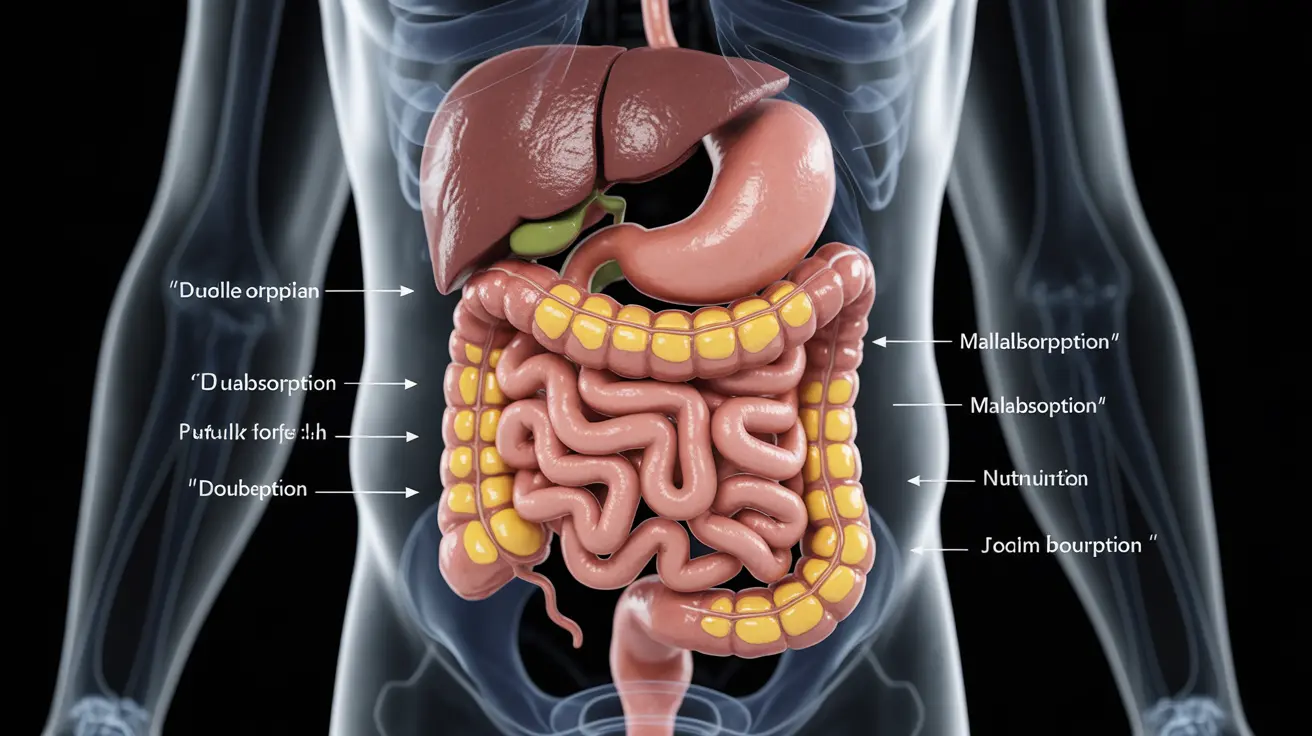When your body struggles to absorb nutrients from food properly, you may be experiencing malabsorption syndrome. This complex condition can affect your overall health and well-being in numerous ways, making it crucial to recognize its signs and seek appropriate medical attention.
Whether caused by digestive disorders, certain medications, or underlying health conditions, malabsorption can lead to various nutritional deficiencies and health complications if left untreated. Understanding the symptoms and getting proper diagnosis is the first step toward effective management.
Key Signs and Symptoms of Malabsorption
Malabsorption can manifest through various symptoms that affect different body systems:
Digestive Symptoms
The most common indicators include:
- Chronic diarrhea
- Bloating and excessive gas
- Floating, greasy, or foul-smelling stools
- Abdominal pain or cramping
- Changes in appetite
Physical Changes
Observable physical symptoms may include:
- Unexplained weight loss
- Muscle wasting
- Fatigue and weakness
- Dry, scaly skin
- Brittle nails and thinning hair
Common Causes and Related Conditions
Malabsorption syndrome can be triggered by various factors:
Digestive Disorders
- Celiac disease
- Crohn's disease
- Inflammatory bowel disease (IBD)
- Bacterial overgrowth
- Parasitic infections
Other Contributing Factors
Several conditions and situations can lead to malabsorption:
- Certain medications
- Surgery affecting the digestive tract
- Radiation therapy
- Lactose intolerance
- Pancreatic insufficiency
Diagnostic Process
Healthcare providers use multiple approaches to diagnose malabsorption:
Initial Assessment
- Detailed medical history
- Physical examination
- Discussion of symptoms and dietary habits
Medical Tests
Diagnostic procedures may include:
- Blood tests for nutrient levels
- Stool analysis
- Breath tests
- Endoscopy or colonoscopy
- Imaging studies
Treatment and Management Strategies
Treatment typically involves addressing the underlying cause while managing symptoms:
Dietary Modifications
- Elimination diets to identify trigger foods
- Nutrient-rich meal planning
- Specialized diet plans based on specific conditions
Medical Interventions
Treatment options may include:
- Enzyme supplements
- Vitamin and mineral supplementation
- Antibiotics for bacterial overgrowth
- Medications for underlying conditions
- Probiotics and digestive aids
Frequently Asked Questions
1. What are the common symptoms that indicate malabsorption syndrome? Common symptoms include chronic diarrhea, weight loss, fatigue, bloating, and fatty stools. You may also experience muscle weakness, skin changes, and nutrient deficiencies.
2. How is malabsorption syndrome diagnosed by doctors? Doctors use a combination of medical history review, physical examination, blood tests, stool analysis, and specialized tests like breath tests or endoscopy to diagnose malabsorption.
3. What causes malabsorption syndrome and which diseases are linked to it? Malabsorption can be caused by various conditions including celiac disease, Crohn's disease, bacterial overgrowth, pancreatic insufficiency, and certain medications. Other factors include surgical procedures and radiation therapy.
4. How can malabsorption syndrome be treated or managed effectively? Treatment involves addressing the underlying cause while managing symptoms through dietary modifications, nutrient supplementation, enzyme replacement therapy, and specific medications based on the cause.
5. What types of nutrient deficiencies should I watch for if I have malabsorption symptoms? Key nutrient deficiencies to monitor include vitamins A, D, E, and K, vitamin B12, iron, calcium, and protein. Regular blood tests can help track these levels and guide supplementation needs.
Remember to consult with healthcare providers for proper diagnosis and treatment of malabsorption symptoms, as individual cases may require specialized care approaches.




